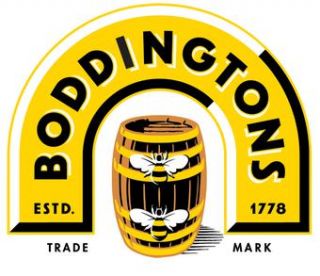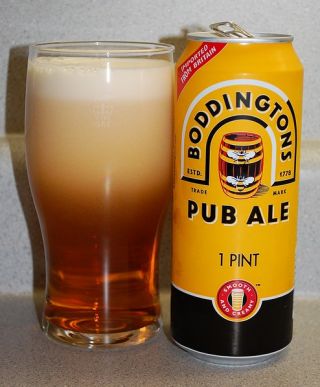TALES FROM ISOLATION: How interviewing the chief of Red Truck reminded me why I became the beer writer interviewing him in the first place
Big Beer in Canada had it good when I was a kid. If only, instead of labour disputes, silly product trends and phony “crafty” brands, it could have just made solid products and good decisions, maybe beer’s overall declining market share wouldn’t have become a problem for the macros (ultimately leading to things like Molson Coors renaming itself a “Beverage Company”).

Jim Dodds (Twitter): knows a lot.
Recently, in preparation for the 30th Anniversary Issue of What’s Brewing magazine, I had a conversation with Jim Dodds, VP of Operations at Red Truck Beer Company. During that call, I realized something unexpected and ironic: the role Big Beer played in converting me to a craft beer crusader.
The part I already knew was the experience of drinking macro beer for (sadly) decades. By the time I discovered “good beer” in the late 1990s, I had actually given up on beer altogether. Same with my wife Ivana: we met at that time, and we were both drinking gin and tonics when socializing, just to avoid beer. We’re not big wine or cocktails fans, so we had a pretty limited scope of choice.
Before that, during high school onward, it was things like Black Label, or the locally-ubiquitous Kokanee, which was brewed in BC by John Labatt Inc. There was also Molson’s Canadian, but even as a youth I somehow knew that one tasted bad.
The experience that rekindled my interest in beer was an unintended result of a change at Labatt in 1993. That year, Canada’s wealthy Bronfman family decided to unload their stake in the brewer and it became vulnerable to acquisition. Eventually, billionaire Gerry Schwartz of Onex Corporation (husband of Heather Reisman of Indigo fame, and at the time fairly famous himself) made one of his patented hostile takeover bids for Labatt (much like Reisman’s then-small book company would successfully do with the much larger Chapters). The brewer ultimately evaded Onex in 1995 by selling to Interbrew, which was a Belgian company that had grown out of the ancient brand Stella Artois.
The ramifications were significant for both Labatt and Interbrew. For the Belgian company, it was the first step in foreign acquisition that ultimately led to some unthinkably large moves, including the merger with Brazilian AmBev in 2004 (to form InBev), Bud maker Anheuser-Busch (to form AB InBev), and their greatest rival SAB Miller in 2015-2016 (at which point they stopped stacking their abbreviations. Too bad: “SAB InBev” was right there).
 For Labatt, it meant that the late 1990s became a time when their product portfolio shifted to imports. First it was Bud, which they were pushing well before AB became part of InBev. It began to outsell their own flagship, Blue. Then, with the Belgian takeover, they started marketing all types of European beers.
For Labatt, it meant that the late 1990s became a time when their product portfolio shifted to imports. First it was Bud, which they were pushing well before AB became part of InBev. It began to outsell their own flagship, Blue. Then, with the Belgian takeover, they started marketing all types of European beers.
Jim Dodds was working at Labatt at the time, in his pre-craft beer life. As Jim tells it, “All of a sudden, it was a big push on the import brands in Canada. Stella was sold as a premium, and they had Leffe Blonde, Hoegaarden and Bellevue Kriek, and those were the big brands that they pushed in Canada.”
One of those beers was Boddingtons Pub Ale, an innocuous UK label that came in a tall widget can. Its nitro widget, developed by Guinness, was more or less unknown in Canada before that. Boddingtons marketed itself as “The Cream of Manchester”, thanks to its inherent body and the ball of nitrogen inside.
One day, a friend of mine showed me with great delight how the Boddingtons widget made a really cool effect when poured into a glass. After watching the nitro cascade settle, he handed me the glass. Not being a beer fan at the time, I had low expectations but I gave it a try.
I was amazed by something I hadn’t experienced before: the feel in my mouth. (I later learned that this was called “mouthfeel”. I could never have figured that out.) It was creamy. It wasn’t bad-tasting. By ‘craft’ standards, Boddingtons is a tame beer…and that’s exactly what immediately made it a gateway beer for me. From there, I tried all the widget cans, like Kilkenny and Guinness, then I tried everything from the UK. Ivana and I both discovered that beer, when not awful, suited our tastes and our body chemistry much better than any other adult beverage. Once I was drinking Guinness like milk, then all bets were off and the door was open to “real beer”.

Flickr: freethehops
I know I wasn’t the only one. Talking to Jim made me realize that Labatt, in the service of their new foreign masters, was introducing a formerly docile drinking public to much more interesting beverages. For me, beers like Boddingtons, Hoegaarden, Bellevue or Leffe were like viruses that escaped the disease lab; they backfired on the people trying to weaponize them. Naturally, while at the liquor store we began to discover the tiny universe of local “craft beers” (a term not widely in use at the time) that had been there all along while I choked down countless awful beers in the 80s and 90s. Missing out on that first microbrewery wave is one of my top ten regrets in life for sure!
I became completely obsessed with beer and began collecting bottles and breweriana from around the world, then around the province. I began reading all I could about it, and we started basing all our travel and holidays around beer tourism (somehow accomplishing this with three young kids). Eventually we found the Great Canadian Beer Festival, where we discovered CAMRA Victoria and joined the Vancouver branch, and met beer friends that we’ve known for fifteen years. Over that time, craft beer finally went mainstream, and the buddies that used to ride me about “weird and fruity beers” suddenly started talking like they always drank the classy stuff. Meanwhile, Ivana and I started writing for, and editing, a beer magazine, and contributing to this beer review website.
Now, with craft brew everywhere, we have no need to drink gin and tonic in any but the most dire circumstances. For this, I have to thank my former Kokanee supplier, John Labatt Inc. Thanks Labatt, for being the first of a series of big Canadian brewers to blow it and lose ownership to a foreign company. You introduced me to the gateway beer that gave my wife and I a passionate pursuit and a world of experiences to enjoy during the second half of our lives.




Dave, I actually knew all of this. As I worked at Labatt New Westminster from 1978 until closing in 2005. Always hated Budweiser. Such an uninteresting and just wimpy beer. Even in the last 10 or so years of working at Labatt ,I loved Mico( craft) beer. Whistler,OK Springs,Tree and some from Washington State and Oregon( Widmer , Redhook etc). They not only screwed myself and others out of a job but screwed their own brands, does Kokanee even sell anymore? Thank God the craft scene is huge now , hopefully this virus doesn’t close many of them down permanently. I hear it might. Kevin Augustine
Unfortunately Boddingtons Pub Ale was delisted from the Canadian market. I created a petition to bring it back.
Any luck, looking for a Boddingtons anywhere.